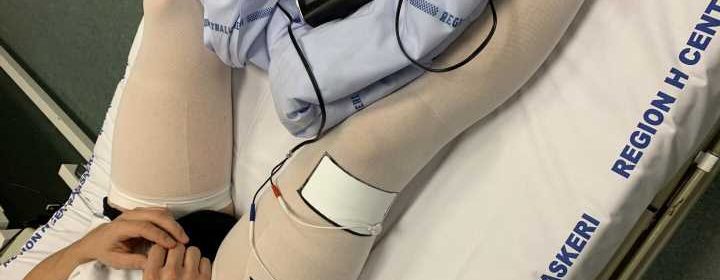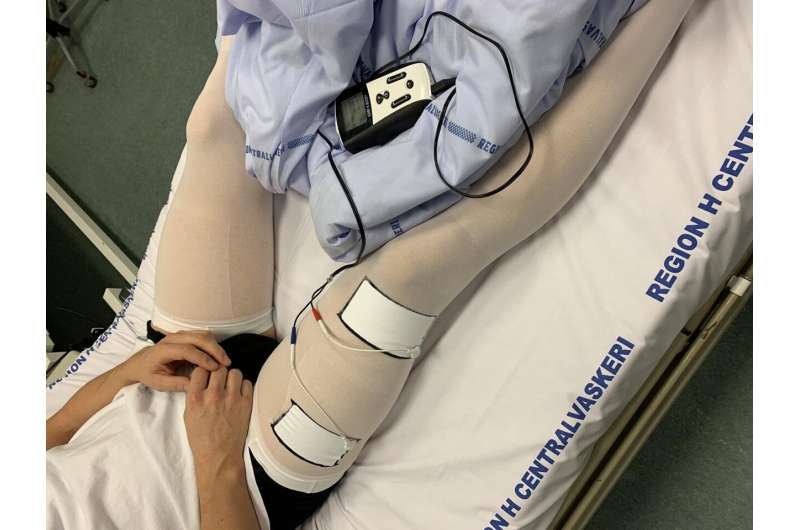Danish invention preserves muscle mass in COVID-19 patients

A research group from Aarhus University has developed a special biocompatible electrode for electrical muscle stimulation that the group has integrated and 3D-printed onto medical support stockings.
In the winter 2020/2021, the stockings were tested on hospitalized COVID patients. The studies were completed in March, but apart from a case study (Danish Medical Journal) data have not yet been published. However, the project group reveal that the results are very promising.
The stockings were tested on 16 COVID-19 patients who agreed to try the support stocking during their hospitalization. The participants were hospitalized for five to seven days and were given a support stocking on each leg, but only one of them had the printed electrodes. The leg without electrodes on the support stocking functioned as a control.
Via the electrodes, participants’ thigh muscles were electrically stimulated for 30 minutes, twice a day, with an individually adapted intensity.
“The study demonstrated that these patients lost approximately 10 percent of their muscle mass after just five to six days of hospitalization. However, with this new technology we’ve been able to counteract the loss,” says Charlotte Suetta, Chief Physician and professor at the University of Copenhagen and head of the clinical trials in the project.
Muscle loss is a serious problem for hospitalized patients, especially patients that need intensive care and are on ventilators for long periods. Recovering from muscle loss after several weeks of total inactivity may take months or years, and some patients will even never recover fully.
There is nothing new about electrical stimulation of muscles, but there are several disadvantages with existing solutions. For example, difficulties in getting electrodes on and off, and skin irritation in the stimulated areas.
“Our invention is much easier to use because the electrodes are an integral part of the textile,” says Shweta Agarwala, who is an expert in printed electronics, and who has been responsible for the electronics part of the setup, which was developed after breakthroughs within printed electronics technology.
The electrodes have three ultra-thin, flexible layers, and these can be printed directly onto different types of material, making it possible to stimulate the muscles through the stocking with minimal irritation.
“And since the electrodes are an integral part of the stockings, they can also tolerate hospitals’ cleaning processes,” continues the assistant professor.
Source: Read Full Article
